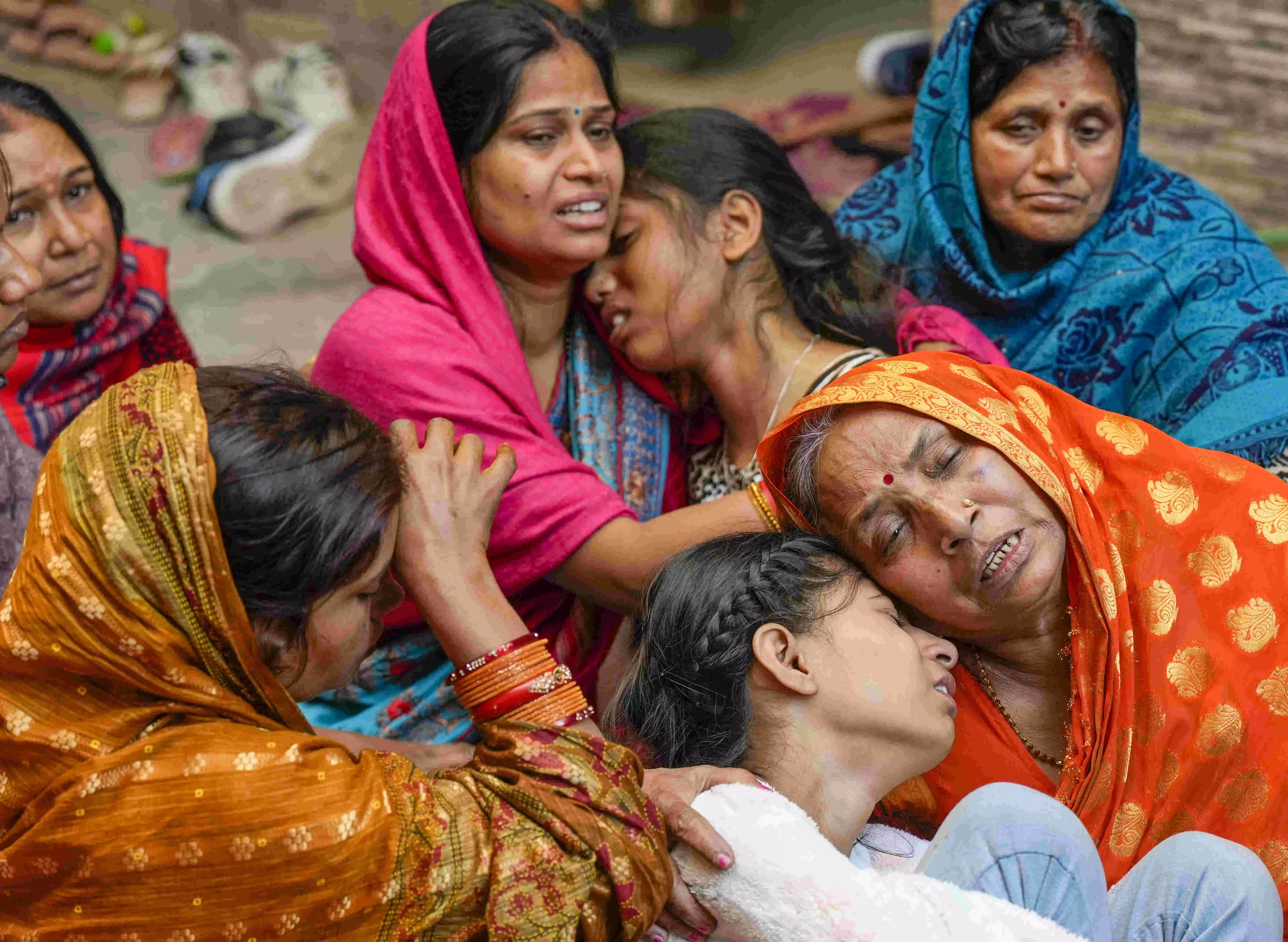A disaster foretold
The tragic stampede at New Delhi Railway Station—triggered by overcrowding, platform confusion, and inadequate security—has exposed critical lapses in railway management and crowd control measures

As the nation was bracing for the spectacle of the shackled second batch of deportees from El Dorado, the USA, the news of a stampede at the New Delhi Railway station left everyone in shock. The stampede occurred on the foot-over bridge between platforms 14 and 15 and accounted for 18 hapless victims, mainly women and children. Another two dozen passengers were injured.
Thousands of people had gathered to board hree Prayagraj-bound trains. The Prayagraj Express was to depart from platform 14. Two other trains set to leave from the same station, the Swatantrata Senani Express and the Bhubaneshwar Rajdhani, were delayed, worsening the crowding at the platforms from 12 to 14.
The eyewitnesses assert that the public address system announced a platform switch for a Prayagraj-bound train, which led to the crowd surge culminating in the unfortunate stampede. Railway authorities have denied any such announcement and insisted that no platforms were changed for any trains. The CPRO went on to claim that the situation at the Railway Station was normal. He skirted all questions about the stampede, saying that the high-level inquiry would reveal the truth about the incident. Last-minute platform changes have routinely led to much chaos, fortunately without any casualties. We have all experienced this madness in our myriad travels on the Indian trains.
Some eyewitnesses gave another version that the passengers bound for Prayagraj mistook the arrival of a train from Prayagraj on platform 16 as switching the platform for the Prayagraj Express, leading to the disaster.
According to some reports, railway officials blocked a staircase on platforms 14 and 15 to contain the overwhelming crowd, contributing to the debacle.
Readers may recall that a similar tragedy struck Prayagraj Railway Station in 2013 during the Kumbh. Forty-two pilgrims lost their lives, and another forty-five were injured in that tragedy. It seems that the Railways have not learnt any lessons from the past.
Crowds have a dynamism of their own. A few thousand people, when pressed in a small enclosure and negotiating a slope, in this case the foot-over bridge between two platforms, the pressure exerted is that much more. The slow movers, like the old and infirm women and children, first give in to the pressure and trip, succumbing to the wave of crowd involuntarily running over them, triggering a stampede and causing loss of life. This uncontrollable and massive crowd pressure can also take down worn-out and weak infrastructure like staircases, railings, etc. That’s precisely what happened at the New Delhi Railway Station.
The news reporters covering the mishap reported that the railways issued 1500 tickets per hour for the general and unreserved compartments to proceed to Maha Kumbh for the holy dubki. Sadly, the unwarranted rush created by this sale of tickets disproportionate to the available seating capacity in the trains and accommodation at the station also contributed to the stampede, which killed eighteen unsuspecting devotees/pilgrims.
Was it a case of Railways biting off more than they could chew? Was there an attempt to make hay while the Sun shone by getting a little extra revenue, or were they genuinely motivated to provide comfortable travel to pilgrims to Prayagraj? These questions may be answered by the enquiry committee in their report.
The Railways Ministry has announced a two-member internal enquiry committee to investigate the circumstances leading to the stampede.
Most eyewitnesses were critical of the absence of adequate numbers of RPF and railway officials. Most of the rescue was initially provided by the coolies. They stood up in this calamitous hour to succour to the stampede victims.
Despite the expected heavy rush because of the Maha Kumbh festival, crowd control measures were glaringly absent. The railway authorities’ mismanagement, poor marshalling of passengers and segregation according to the available holding areas added to the chaos.
The Railway Board and RPF should have anticipated the overwhelming response from people visiting Prayagraj from various railway stations in the country. The major railway junctions from where special trains were run for Maha Kumbh should have been factored in while making preventive regulatory arrangements. Standard measures to deal with large crowds were ostensibly not in place at the New Delhi Railway Station. The Railway Board will have to explain this to the Enquiry Committee.
Railway Protection Force (RPF) is a dedicated force created under the Railways Ministry to protect railway assets and passenger safety. States also have overlapping jurisdictions, compounding the complete issue. In fact, RPF is an anachronism in modern India. Law and enforcement for all other modes of transport is under the Union Home Ministry and the state governments. Only in the case of Railways, a special force is created for law enforcement and watch and ward functions. It would be better from the point of view of operational autonomy and checks and balances to bring RPF under the supervision of the Home Ministry. After all, CISF, which provides security to the aviation sector, vital installations, industrial complexes and the Parliament, also operates under the Home Ministry without any problems.
Some former chiefs of RPF confide that the ministry and the Railway Board accord the Force the least priority in strengthening its operations. The Railways are driven by welfare and profit motives. Engaging such an institution to supervise a law enforcement agency is incongruous and a sure recipe for disaster, as exemplified in the New Delhi Railway Station tragedy.
The role and responsibilities of the Government Railway Police under the state Police forces should also be reviewed for a seamless railway security and protection environment.
Railways should do what they do best: run trains. Security should be left to the MHA, the nodal ministry for all internal security and law enforcement in the country.
The writer is a former Director General of Police, Himachal Pradesh, and an alumnus of the National Defence College. Views expressed are personal



